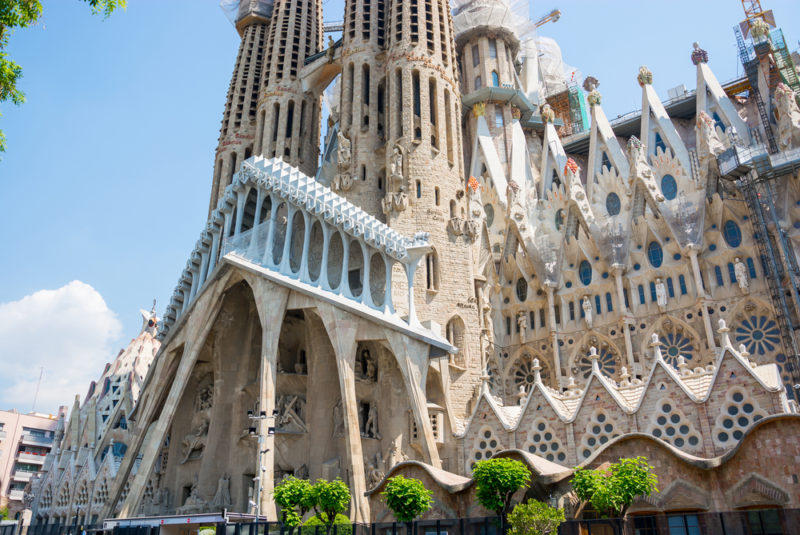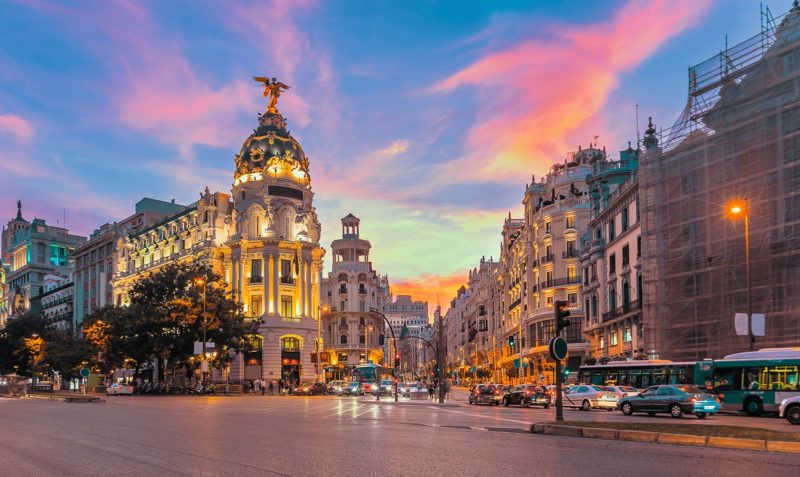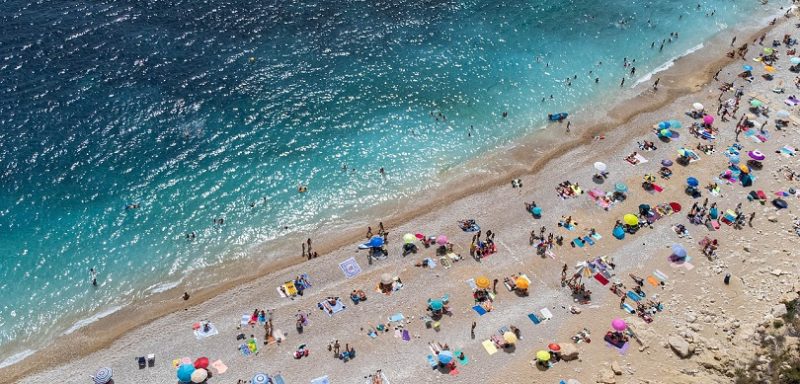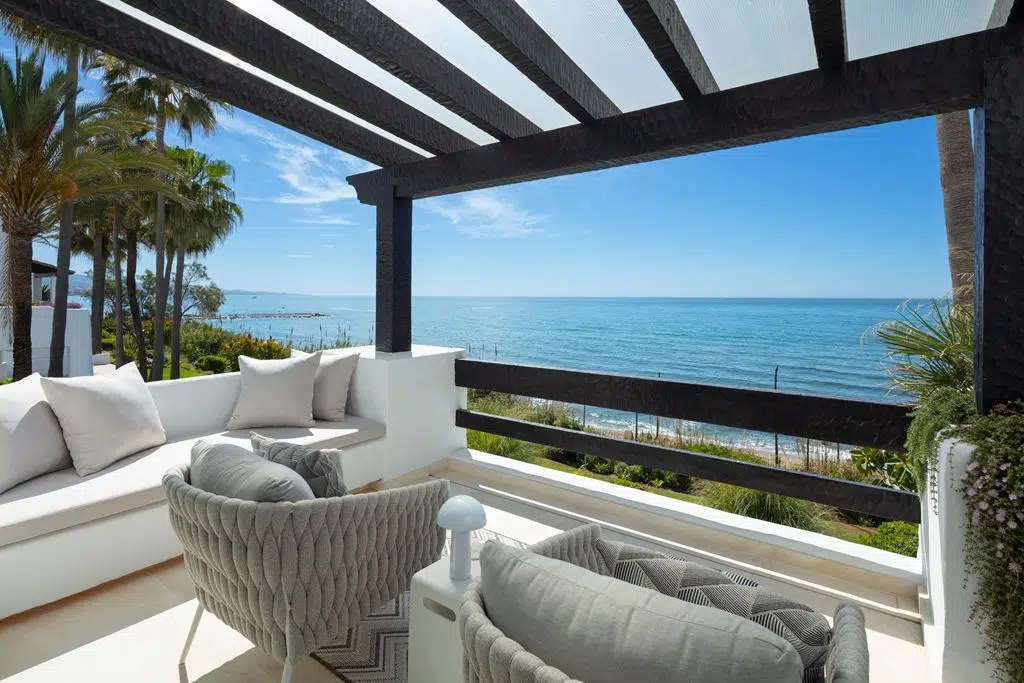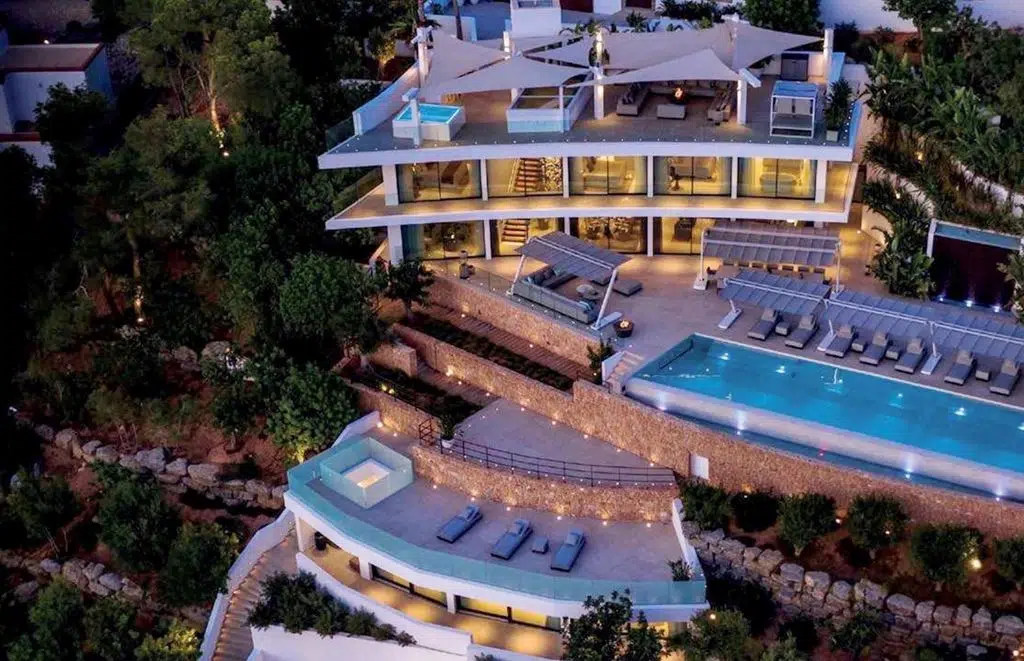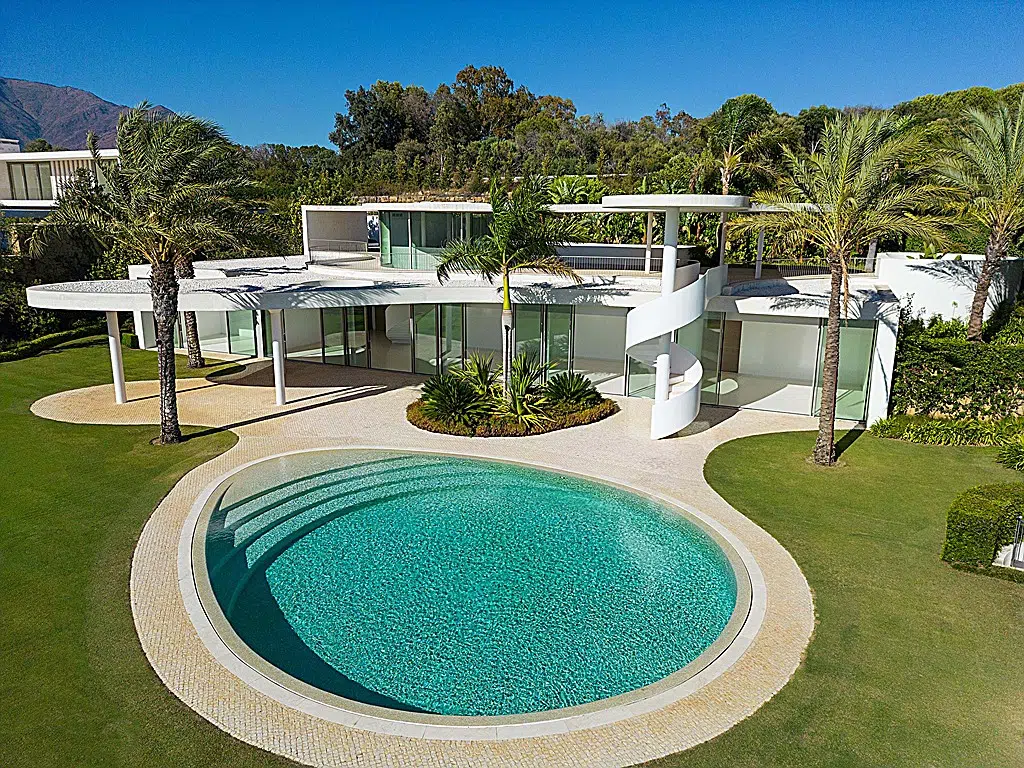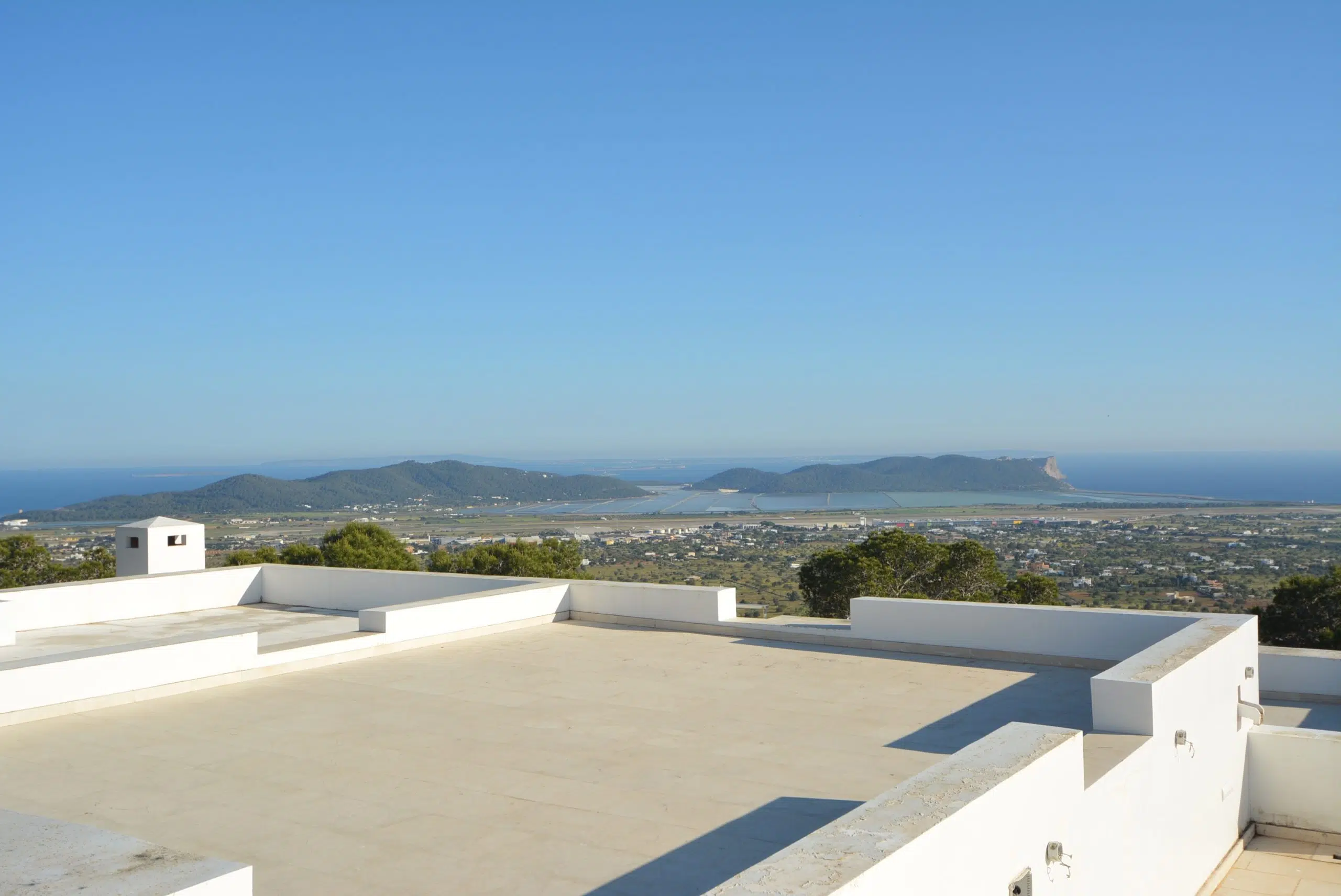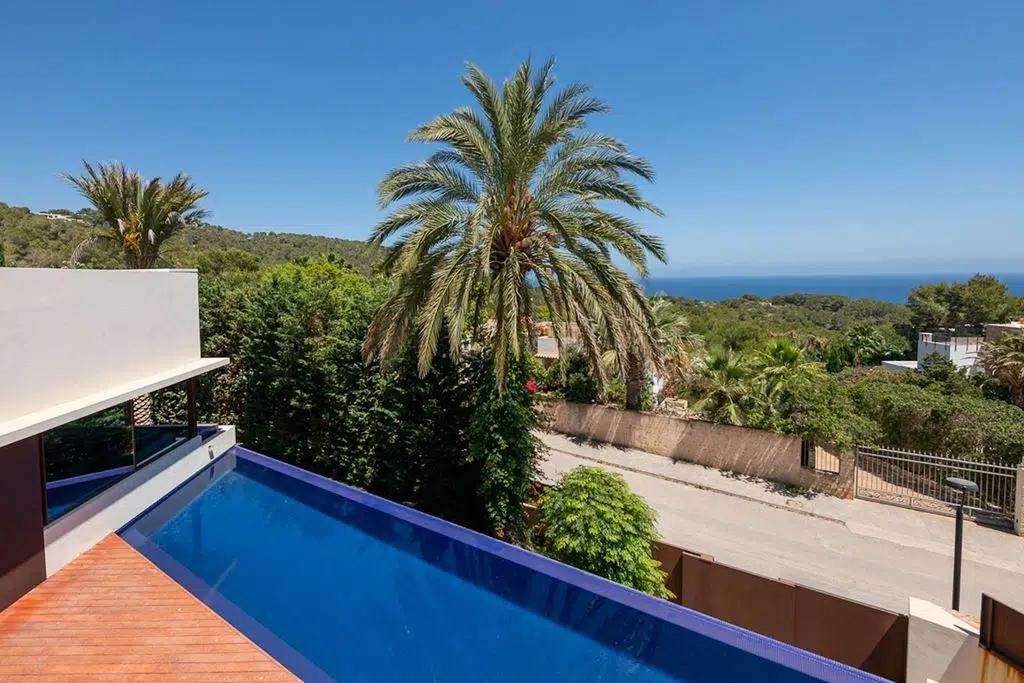Anyone well-versed in European tourism will know who visits Spain the most? Sitting just a short flight away, Brits are the most popular tourists in Spain. Averaging 100 million visitors annually, Spain’s tourism market is a significant economic driver. Before COVID hit, the Spanish tourism industry averaged 70 billion euros of revenue from the masses of tourists descending on the shores yearly.
Out of this, Brits love to spend, spend, spend, for family holidays, stag dos, or single vacations. In 2022, over 15 million Brits visited Spain. In fact, the European country is so popular that many Brits also buy holiday homes or move out permanently. Brits average for about 20 to 25% of tourist arrivals annually.
Following that, alternating between them, French and German tourists account for 2nd and 3rd place with an average of 10 million arrivals yearly each. So, if you want to buy a summer holiday home in Spain or rent out your home in Spain for tourism purposes, let’s break down the stats even further to discover more about the love affair for all things Spanish.
International Tourists Who Visit Spain
1: Leading Tourism in Europe
Looking at how mainstream tourism in Spain started, we must go back seventy years. Whereas tourism up until that point was mainly focused on historical sites and limited to the upper class, the idea was born in sleepy Benidorm to diversify local incomes from fishing to tourism. Hotels were built, and people started flocking.
In 1967, Alicante airport opened, and this really showcased tourism to international visitors. By 1975, roughly 30 million international tourists arrived in Spain to experience the summer sun, sea and sand lifestyle. Naturally, as tourism became ordinary rather than a luxury, this figure grew yearly.
2: International Tourists and the Spanish Economy
Tourism in Spain accounts for 11% of the GDP. In fact, Spain is the world’s 2nd most significant tourism industry, proving worth in all sectors, from hospitality to restaurants to excursions, tours and air travel. The worst year for summer tourism sectors was COVID, when international tourists dropped drastically to 19 million; however, in years to follow, international visitors picked up, albeit figures still lack 2019 records.
3: Why Do British Tourists love Spain?
Weather: Spain’s climate is significantly sunnier and warmer than in the UK. This makes Spain an attractive destination for British tourists looking to escape their home country’s gloomy and rainy weather.
Beaches and Diverse Landscapes: Spain boasts stunning coastlines with beautiful beaches. Brits who love the beach and sea often find Spain an ideal holiday destination. Spain offers diverse landscapes, from the Pyrenees mountains to Mediterranean beaches. This diversity means various holidays, from hiking and skiing to beach vacations, are available.
History and Architecture: Spain is rich in history and architecture. Cities like Barcelona, Madrid, Seville, and Granada offer historic sites, museums, and stunning architecture, which is fascinating for Brits interested in history and culture.
Cost of Living: While Spain is expensive in some areas, the country is more affordable than the UK. This affordability makes Spain an attractive destination for retirees or those looking to live abroad for extended periods.
Language: Many Brits learn Spanish, at least to some extent, in school, making Spain an accessible destination for English-speaking tourists. They can also navigate and communicate in Spain compared to countries with less English proficiency, thanks to the locals knowledge of foreign language.
Travel Accessibility: Spain is relatively easy to get to from the UK. Numerous flights and ferry routes connect the two countries, making the country convenient for British travellers.
Expat Communities: Spain’s sizable British expat community means Brits find familiar elements of home and support networks when living or vacationing in Spain. (Read – Why is Spain so popular?)
4: What is the Most Visited Tourist Attraction in Spain?
Spain’s top attraction is Sagrada Família, the most iconic landmark in Barcelona. Sagrada Família, also called the Holy Family Basilica and Expiatory Church is a large Roman Catholic Basilica designed by renowned Catalan architect Antoni Gaudí. Construction began in 1882. The project is expected to be completed by 2030, although the exact date is uncertain.
Sagrada Família was designated a UNESCO World Heritage Site in 1984 to recognise the architectural significance and unique fusion of Gothic and Art Nouveau styles. Gaudí’s design for the Sagrada Família is characterised by distinctive, organic shapes and intricate ornamentation. The basilica’s exterior features elaborate facades depicting Biblical scenes. At the same time, the interior boasts forest-like columns and stunning stained-glass windows.
Gaudí infused the Sagrada Família with religious symbolism. The basilica’s design tells the story of Christ’s life through architecture, with each facade representing different phases and the interior symbolising heavenly realms. Sagrada Família attracts millions of tourists each year. Tourists explore the interior, including the nave, crypt, and towers, offering panoramic views of Barcelona.
Sagrada Família is dear to Catalonia people and symbolises Catalan identity and pride. Detailed plans and models left behind by Gaudí have been used in construction processes, and modern technologies ensure the basilica’s stability and longevity.
5: Madrid and Barcelona – Most Visited Cities in Spain
Tourism in Madrid and Barcelona, two Spanish cities, play significant roles in their economies and cultural vibrancy. Both European cities offer attractions, cultural experiences, and activities that draw millions of foreign tourists worldwide each year.
TOURISM IN MADRID: Madrid has world-class museums, including the Prado Museum, the Reina Sofia Museum (home to Picasso’s “Guernica”), and the Thyssen-Bornemisza Museum. These European institutions showcase an extensive collection of art and historical artefacts. The city boasts historic landmarks like the Royal Palace of Madrid, Almudena Cathedral, and Plaza Mayor. The historic neighbourhoods of Madrid, like La Latina and Lavapiés, attract tourists from Europe and the USA.
Retiro Park is a sprawling green oasis in Madrid where visitors enjoy boating, relaxing under the trees, or exploring the Crystal Palace. Casa de Campo is another vast park offering outdoor activities. Visitors can taste traditional Spanish dishes in tapas bars and restaurants, explore food markets like Mercado de San Miguel, and indulge in culinary cultures. The city offers excellent shopping opportunities, from upscale boutiques in the Salamanca district to the bustling El Rastro flea market.
NEED TO KNOW ABOUT MADRID: The Museo del Prado, also known as the Prado Museum, is the world’s most renowned and prestigious art museum. Located in Madrid, the museum is celebrated for exceptional collections of European art, mainly works from the Spanish Golden Age and masterpieces from various other periods and regions. The Museo del Prado Museum was founded in 1819 as a Royal Museum of Painting and Sculpture. Its primary purpose was to house and display the extensive art collections of Spanish monarchs, particularly those of King Charles III and King Charles IV.
The museum on the Paseo del Prado, a prominent boulevard, was designed by architect Juan de Villanueva and completed in 1785. The Prado Museum houses diverse collections of artworks from the Middle Ages to the 19th century. These include superb works by Spanish painters, including Francisco Goya, Diego Velázquez, El Greco, and Bartolomé Esteban Murillo. The Prado also houses an impressive array of European masterpieces, such as paintings by Hieronymus Bosch, Titian, Peter Paul Rubens, Albrecht Dürer, and Rembrandt.
Visitors can admire works by Italian Renaissance artists like Raphael, Tintoretto, and Titian. The museum also features Flemish and Dutch paintings, including pieces by Jan van Eyck, Pieter Bruegel the Elder, and Johannes Vermeer. Some famous images in Prado Museum’s collection include “Las Meninas” by Diego Velázquez, ” Garden of Earthly Delights” by Hieronymus Bosch, and “ Third of May 1808″ by Francisco Goya.
TOURISM IN BARCELONA: Barcelona is renowned for its unique architectural heritage, including Antoni Gaudí’s masterpieces such as the Sagrada Família, Park Güell, Casa Batlló, and Casa Milà (La Pedrera). These landmarks showcase the city’s distinctive Modernist style. Barcelona offers several urban beaches along the Mediterranean coast, including Barceloneta Beach, famous for swimming and sunbathing.
Cultural scenes include museums like the Picasso Museum and the Joan Miró Foundation. The Gothic Quarter (Barri Gòtic) and El Raval historic district are perfect for exploring history and culture. Barcelona’s culinary scene is diverse, and tourists enjoy Catalan cuisine in traditional restaurants and tapas bars. Markets like La Boqueria offer fresh local produce, while Passeig de Gràcia and Portal de l’Àngel attract fame for shopping potential.
Madrid and Barcelona feature excellent transport networks, making it easy for tourists to explore the rest of Spain. Each city offers culture, history, and modernity, ensuring memorable experiences for visitors. (About the best cities in Spain.)
6: Popular Coastal Regions in Spain for International Tourist Arrivals
Most beach tourism destinations centre around the east and south coasts of Spain. These include places like the Costa Brava, Costa Blanca, Costa del Sol, and Costa Calida, which also consist of the autonomous community of Murcia. As well as being famous for international tourism, they thrive in summer months with domestic tourists.
Some people also head to the Canary and Balearic Islands. The term “Costas” in Spain refers to coastal regions. Spain’s vast coastline divides into several distinct coastal areas called the “Costas.” These popular coastal regions feature beautiful beaches, pleasant climates, and leisure activities.
Costa del Sol: In southern Andalusia, Costa del Sol is one of Spain’s most famous coastal areas, stretching along the Mediterranean Sea. With a sunny climate and beautiful beaches, vibrant resorts like Marbella, Malaga, Torremolinos, and Fuengirola offer relaxation, water sports, golf courses, and lively nightlife.
Costa Blanca: Meanwhile, Costa Blanca, in Valencia, also features sandy beaches and picturesque coastal towns. Popular Alicante and Benidorm offer cultural attractions, water activities, and vibrant nightlife.
Costa Brava: Situated in northeastern Catalonia, Costa Brava’s rugged coastline gives way to rocky coves and charming fishing villages. Destinations like Lloret de Mar, Tossa de Mar, and Cadaqués offer cultural experiences.
Costa Dorada: Also in Catalonia, Costa Dorada is named for its golden sandy beaches. This Costa is home to popular seaside towns like Salou, Cambrils, and historic Tarragona. It offers beach activities, water parks, and Roman ruins.
Costa de la Luz: Located along the southwestern Atlantic coast, Costa de la Luz offers a more relaxed atmosphere than the Mediterranean coast. Cadiz, Huelva, and Tarifa are notable destinations in this region.
Verde: Costa Verde, or “Green Coast,” in northern Asturias and Cantabria is characterised by lush green landscapes, rugged cliffs, and beautiful beaches. Popular towns include Gijón and Santander.
Costa Cálida: Situated in the Murcia region, Costa Cálida’s warm waters and calm seas make La Manga del Mar Menor famous for its unique geography.
Costa Tropical: In the Granada province of Andalusia, this Costa features a subtropical climate, beautiful beaches, and charming coastal towns like Almuñécar and Salobreña.
Costa Almería: This coastal area in Almería has arid landscapes, unique rock formations, and pristine beaches. Cabo de Gata-Níjar Natural Park is a prominent natural attraction in this region. (More about the Spanish Costas.)
7: Domestic Tourism in Spain
Domestic tourism in Spain also significantly affects the country’s economy. Spaniards are avid travellers who often explore their country for leisure, cultural experiences, and relaxation. Spain’s sizeable domestic tourism market means many Spaniards take vacations within their country, especially during holiday periods like Semana Santa (Holy Week) and the summer months.
Thanks to Spain’s geographical diversity, domestic tourists have many destinations to choose from. Spaniards often engage in cultural and historical tourism, visiting museums, historical sites, and cultural events in different regions of Spain. Popular destinations include the Prado Museum in Madrid, the Alhambra in Granada, and Gaudí’s architecture in Barcelona. Spaniards also take pride in their regional cuisine. For example, people travel to the Basque Country for pintxos (small snacks), Rioja for wine tours, or Valencia for paella.
Coastal regions are prevalent for domestic tourism, especially during summer. Spaniards flock to the Mediterranean and Atlantic coasts to enjoy the sun, sea, and beaches. Spain’s natural beauty, including national parks, mountains, and hiking trails, attracts outdoor enthusiasts. Picos de Europa and Pyrenees are popular destinations for nature lovers and adventure seekers. Spaniards often travel to experience festivals like La Tomatina in Buñol, San Fermín in Pamplona, and Carnival in Tenerife.
In recent years, domestic tourism in Spain has become more important due to global travel restrictions and uncertainties related to the COVID-19 pandemic. Many Spaniards opted to explore their own country, discovering hidden gems and fostering a deeper appreciation for Spain’s diverse landscapes, culture, and heritage.
8: The Canary Islands of Spain
The Canary Islands, called “Islas Canarias” in Spanish, are a Spanish archipelago off the northwest African coast. These famous islands attract tourists with stunning natural beauty, diverse landscapes, and pleasant year-round climates.
The Canary Islands consist of seven central and several smaller islands, including Tenerife, Fuerteventura, Gran Canaria, Lanzarote, La Palma, La Gomera, and El Hierro. They sit in the Atlantic Ocean and are part of the Macaronesia region.
The Canary Islands enjoy a mild, subtropical climate, making them popular year-round for tourists. They are often called “Islands of Eternal Spring” due to pleasant temperatures. Some natural highlights include Teide National Park on Tenerife, Timanfaya National Park on Lanzarote, and Garajonay National Park on La Gomera.
Famous beaches include Playa de las Teresitas on Tenerife, Sotavento Beach on Fuerteventura, and Papagayo Beach on Lanzarote. The islands’ unique landscapes provide excellent exploration and adventure opportunities through hiking, cycling, water sports, and wildlife watching.
Each Canary Island has cultural traditions and heritage influenced by Spanish, African, and Latin American cultures. Visitors explore historic towns, museums, and festivals to experience local culture. Traditional dishes include “papas arrugadas” (wrinkled potatoes), “mojo” sauce, and “gofio” (roasted grain). Seafood is also a staple due to the islands’ coastal location.
Tourism attracts visitors from Europe and beyond, and luxury resorts with budget-friendly options make them accessible to everyone. Tenerife and Gran Canaria have the most prominent international airports, providing easy tourist access.
9: The Balearic Islands of Spain
The Balearic Islands, called “Islas Baleares” in Spanish, is an archipelago in the Mediterranean Sea, off the eastern coast of the Iberian Peninsula that attracts many foreign tourists. This Spanish autonomous community consists of four main islands and numerous smaller islets.
The four main islands are, from largest to smallest, Mallorca (Majorca), Menorca (Minorca), Ibiza, and Formentera. The Balearic Islands enjoy a Mediterranean climate with dry summers and mild winters and feature picturesque landscapes like sandy beaches, rugged coastlines, limestone cliffs, lush forests, and rolling hills. Tramuntana Mountains in Mallorca are a UNESCO World Heritage site and offer excellent hiking opportunities. Whereas famous beaches include Playa de Palma in Mallorca, Cala Galdana in Menorca, Ses Salines in Ibiza, and Ses Illetes in Formentera.
The islands provide several outdoor activities, such as hiking, cycling, water sports (including diving and sailing), and birdwatching. Nature reserves and marine parks on these islands protect the diverse ecosystems. The Balearic Island’s rich cultural heritage is influenced by various Mediterranean civilisations, including the Romans, Moors, and Catalans, and visitors explore historic towns, ancient ruins, and charming villages.
Balearic cuisine features fresh Mediterranean ingredients with an emphasis on seafood. Traditional dishes include “ensaimada” pastries, “sobrassada” sausage, and “paella.” Ibiza earns fame for vibrant nightlife and electronic music scenes. The island hosts world-famous clubs and beach parties, making the island famous for partygoers from around the globe.
Important cultural events include Mallorca’s Sant Joan Festival, Menorca’s Sant Joan Festival, and Ibiza’s Eivissa Medieval Fair. The Balearic Islands have international airports in Mallorca, Menorca, and Ibiza. Ferries and boats provide additional transportation options to the islands and the mainland.
10: Buying a Holiday Property in Spain
Location: Choose your location carefully. Consider the proximity to the airport, attractions, beaches, ski resorts, or other points of interest that draw tourists. Also research to find out if the destination operates for year round tourism, or is just a summer destination.
Type and Management: Decide on the type of property to invest in, like a condo, single-family home, cottage, or apartment. Consider size, amenities, and suitability. Decide if you want to employ a keyholding company to look after the property when you are not there.
Budget and Financing: Establish transparent budgets for the purchase, considering not only the price but also closing costs, maintenance, and potential renovations. Explore financing options, including mortgages, and shop for favourable interest rates.
Amenities and Maintenance: Furnish with comfortable and functional furniture and appliances. Consider adding extras like a fully equipped kitchen, Wi-Fi, cable TV, and outdoor seating. Regularly maintain and inspect the property. Be prepared to address maintenance issues promptly to keep guests satisfied.
Financial Planning: Create financial plans that include budgeting for expenses, taxes, and setting aside funds for unexpected costs. Consult with legal and tax professionals knowledgeable about investments to ensure you make informed decisions and maximise your investment’s potential. Read how to buy a summer holiday property in Spain.
Contact Us: If you are looking at who visits Spain the most because you want to invest in rental homes or a summer holiday home, contact us today. We can answer all your questions about local tourism markets. Additionally, see our properties for sale in Spain here. We are Spot Blue International, and we’ve helped hundreds of foreigners invest in Spain.

